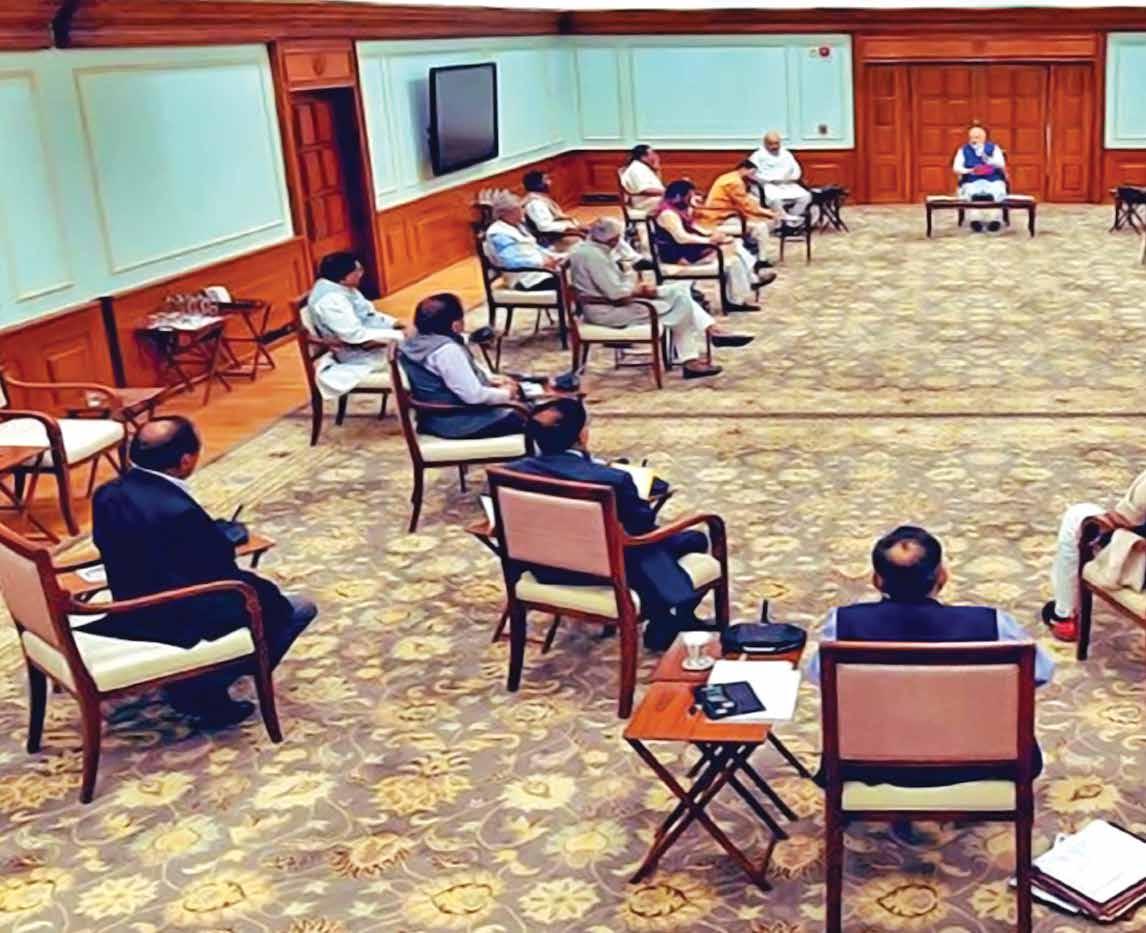
15 minute read
Modi Sarkar at 7 Years Dented But Still Popular
COVID has made an unimaginable dent on the credibility of Narendra Modi government amidst the second wave of the virus, economic growth is nothing and unemployment at record levels. Despite this, the government continues to enjoy the popular support. This is owing to some of the key decisions taken during the past seven years of its rule.
By Sanjeeb Kumar
Advertisement
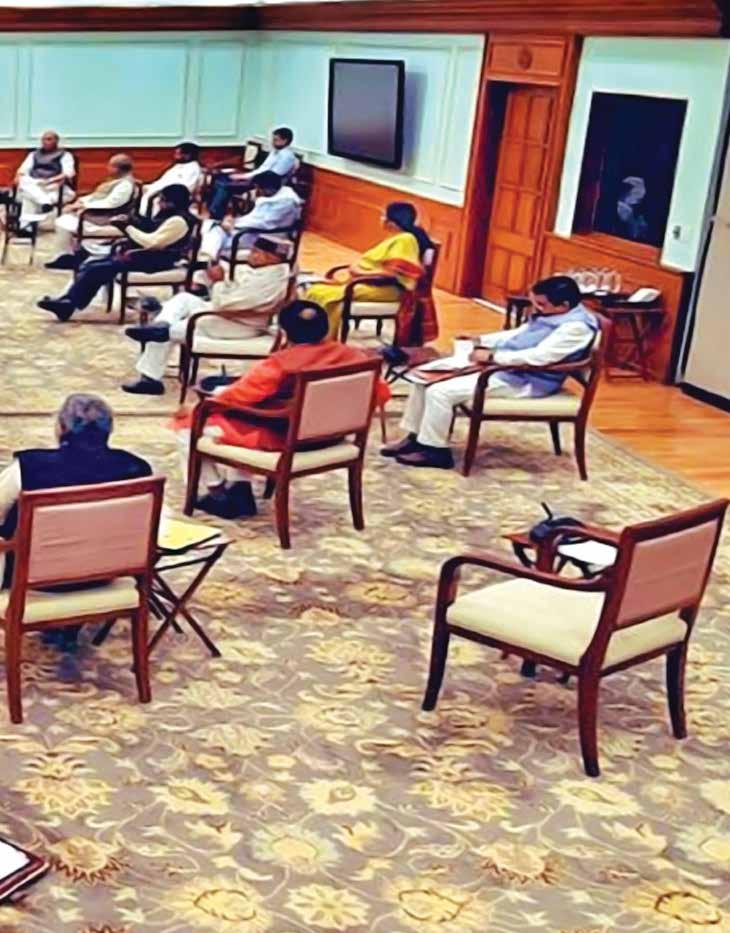
The Narendra Sarkar completes seven years in a stretch. These years were not devoid of controversies and many key decisions were taken that took the country with surprise or shock. Whether critic or supporter, one accepts without deviation that the ‘Sarkar’ is decisive in nature. The echo of all the decisions of the government reached most corners of the world. Let us tell you that on 26 May 2014 when Modi was sworn in as the Prime Minister, he had made an achievement in his name. PM Modi is the first Prime Minister of the country who was born in independent India.
Many political commentators viewed the 2014 election results, where BJP on its own secured a majority for the first time, as an aberration which wasn’t going to be repeated again in 2019 Lok Sabha Polls. However, all these theories were proven wrong when Indian voters elected Modi again in 2019 with a thumping majority more than that of 2014.
Politically speaking, the results of 2019 confirmed the change of the pole of country’s politics which had been dominated for decades by the grand old Congress party. BJP is not just in the centre but the centre of politics is now the BJP. The saffron party led NDA combination fetched a whopping 45 per cent votes more than its 37 per cent share in 2014. In several key states, the vote share was well over 50 per cent; this means no matter what coalition is stitched against the BJP, it was destined to be defeated and defeated quite comfortably. The BJP is now the Congress of Nehru; no less.
Modi Sarkar, today, is facing the toughest test. The coronavirus pandemic pushed PM Modi to declare a stringent lockdown to contain the spread of the virus. This hit the economy hard, and when it was recovering, the second wave hit, forcing many States to impose lockdowns – most of them stringent in nature and it continues to be.
In 2020, the government was praised all over the world for its success in taking tough decisions and implementing them effectively. All the leaders of the world have praised it. People believe that the Modi government was successful to a great extent in dealing with the Covid crisis accept oxygen and ICU bed shortages in some hospitals. Overall, the balance of the seven years in power is a mixed bag of successes and failures.
On the other side, it is also true that the Modi government has been tremendously successful in rural outreach through the various welfare schemes than the Congress led UPA regime. One of the biggest achievements is the distribution of free gas cylinders to the poor women through Ujjwala Yojana, that started in 2016 and continues to expand.
Article 370, CAA
In a dramatic series of events in the first week of August, the government moved to abrogate provisions of Article 370, which accorded special status to Jammu and Kashmir. Article 370 and Article 35 were soon revoked even as the Centre imposed a clampdown.
It also passed the Citizenship Amendment Bill providing eligibility for Indian citizenship to illegal Hindu migrants from Afghanistan, Bangladesh, and Pakistan, who entered India on or before December 31, 2014.
Ayodhya and Ram Temple
The Modi administration has formed the trust and the construction of a grand Ram Mandir has begun after the Supreme Court judgement. An active involvement by the Centre, the state of
Uttar Pradesh and the related parties has helped the case to be disposed off without much delay anymore.
UAPA Amendment/Anti-Terror Law
Considered a cornerstone in Narendra Modi's zero-tolerance policy against terrorism, the government introduced the Unlawful Activities (Prevention) Amendment bill, which was approved by the Parliament. The amended Act confers power upon the central government to designate an individual as a terrorist and seize their property. Many opposition parties have called the amendment draconian. managed to turn the triple talaq bill into an Act. Scrapping of the practice had been one of the main planks of the BJP, whose government at the Centre had promulgated a number of ordinances after failing to get the legislation through the Rajya Sabha where it lacked adequate numbers.
Excessive RBI Surplus Transferred to the Government
The Reserve Bank of India (RBI) was compelled to transfer a record Rs
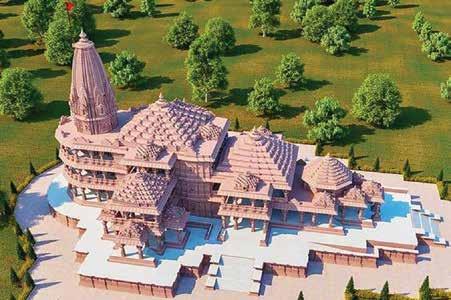
Criminalized Triple Talaq
In a big victory, the NDA finally 1.76 lakh crore dividend and surplus reserves to the government, boosting Modi's prospect to stimulate the slowing economy without widening fiscal deficit. This was done under the revised Economic Capital Framework.
Sops for Farmers and Small Traders
To boost agriculture and small trade in the country, the NDA government extended PM-KISAN scheme to all farmers, irrespective of the size of landholdings. Under this scheme, beneficiaries, after the age of 60, will receive a pension of Rs 3,000. The government has also announced higher MSPs for Kharif crops.
The government also introduced a pension scheme for small traders. This scheme will directly benefit 3 crore retail traders and shopkeepers. Finance Minister Sitharaman in her budget speech announced the special pension for shopkeepers and microretailers with an annual turnover of Rs 1.5 crore. She also proposed a boost for MSMEs under which the government will allocate MSME loans of up to Rs 1 crore to the MSMEs.
Infrastructure
The government has also announced Rs 100 lakh crore of investment in road, railways, ports, airports and other infrastructure projects. It has decided to invest a whopping Rs 100 lakh crore in the next five years in infrastructure, Jal Marg Vikas, Udaan and Pradhan Mantri Gramin Sadak Yojana (PMGSY) Phase III.
Merger of Public Sector Banks
Back in 2019, the Finance Minister announced that the Government would soon carry out a mega-merger of 27 Public Sector Undertaking (PSU) banks. Post the implementation of the merger announcement, the number of PSU banks has come down to 12. The move, which had long been overdue, is likely to increase the lending capacity of the banks and hence, benefit multiple sectors, including real estate.
In what is one of the biggest mergers since the integration of SBI with five associate banks, Sitharaman announced the merger of Punjab National Bank (PNB), Oriental Bank of Commerce (OBC) and United Bank of India with a business of Rs 17.95 lakh crore and a network of 11,437 branches, making it the secondlargest public sector bank (PSB) in the country.
Insolvency and Bankruptcy Code
The Modi government can certainly take the all the credit for implementing
a comprehensive bankruptcy law, India’s own version of the Chapter 11 regulation in the US Bankruptcy Code. Ever since its implementation in 2016 though, the IBC has been the subject of legislative and regulatory tinkering by the parliament, the Insolvency and Bankruptcy Board of India and the Reserve Bank of India (RBI).
The net result is that operational creditors have overwhelmingly outnumbered corporate debtors in using the provisions of the law—by as much as 87%—so much so that the latter are beginning to pay them even before they trigger the IBC.
GST
The opposition sees it as ‘Gabbar Singh Tax,’, while for the Modi government this many prove another factor to change the balance its favour. The Goods and Service Tax (GST) introduced from July 2017, at the stroke of midnight, has been one of the most significant financial reforms of the Modi government. The implementation of GST has created a single common market in India by subsuming several different taxes into a single tax and applicable pan-India. The move has helped in removing the cascading impact of different taxes.
Gradually it is being made simpler, as it had some hiccup moments like each month filing, which has been removed. With signs of more relaxations and abolition, experts believe that GST will definitely be a trump card.
Economic Offenders Law
Under severe criticism for its handling of persons like Vijay Mallya and Nirav Modi, the government approved the Fugitive Economic Offenders Bill. The Bill that came into force in April would apply with retrospective effect. It states that the properties of those fleeing the country will be confiscated in cases involving more than Rs 100 crore. A draft of the Bill was circulated in May last year seeking comments from all stakeholders.
A Corruption Free Run
There have been no serious charges of corruption against the government. The UPA was embroiled in controversy with one scam after another hitting the headlines. The opposition has made several charges, but most of them have fallen flat. Overall the Modi government has been free from charges of corruption.
Schemes for the poor
The Narendra Modi government has launched various schemes targeted towards benefiting the poor and the lower middle class. Under the Ujwala Yojana, over 7 crore families under the BPL have received free LPG connections. The Jan Dhan Yojana which was aimed at financial inclusion for the poor has over 34 crore beneficiaries. Through the Pradhan Mantri Awas Yojana, the Narendra Modi has aimed to build 2 crore homes by 2022.
New Acts
The government has ratified, amended and implemented various Acts to further the interest of the nation and the marginalized sections of society. The Prohibition of Benami Property Transaction Act (PBPT) amended the loopholes of the previous Benami Act and came into effect in November 2016. The Enemy Property (Amendment and Validation) Bill which was passed in Parliament in 2017 amended a 49-year-old law and declared that the descendants of those who have acquired the citizenship of Pakistan and China will no longer be able to inherit the property of their predecessors.
Revival of Fertilizer Plants
At present eight fertilizer public sector plants have been lying closed. The Modi government has revived five plants namely Talcher, Ramagundam, Gorakhpur, Sindri and Barauni by setting up Ammonia-Urea plants of 1.27 million metric tonne per annum (MMTPA) capacity each with investment of Rs 40,000 crore.
Swaach Bharat Abhiyan
Perhaps one of the most socially accepted schemes, which got a wider acceptance. A strong social perception has come up around this programme and a very perceptible awareness became visible. The program is a movement against open defecation and keeping one’s immediate environment clean and hygienic. Constructing an in house toilet and not letting
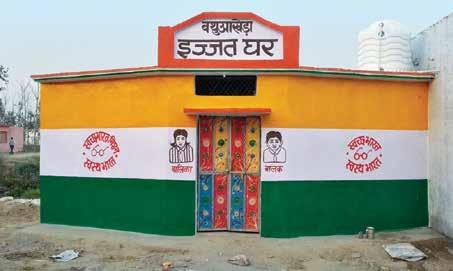
women folk to go to the open for defection became a social movement. The construction with joint participating of the government has given it the necessary boost.
Doubling Farmers’ Income
The government has passed three farm laws which are expected to usher in much-needed reforms in the farming sector. It has the potential to
make farming a lucrative endeavor and also open the floodgates to private investment and innovation. It will help the government achieve its mission of doubling farmer incomes by 2022.
A section of the farming community, especially those belonging to Punjab and areas around Delhi, is protesting against the laws. The government has approved Rs 20,000 crore Pradhan Mantri Matsya Sampada Yojana to bring about the Blue Revolution through sustainable development of the fisheries sector over the next five years.
As announced in the Budget 202122, over 20 lakh hectare land will be brought under drip and sprinkler irrigation with the creation of a micro-irrigation fund with NABARD of Rs 10,000 crore.
Charging to be 3rd Largest Economy
While the government has prepared a blueprint for becoming a $5-trillion economy by 2025, the plans have been hit hard by the pandemic. The resultant lockdowns have impacted economic activity and are likely to shave off 2 years of growth. The government has fulfilled its promise of lower tax rates for the corporate sector, announcing a
reduction from 30% to 22%.
The Government has also introduced a Production Linked Incentive (PLI) scheme for the manufacturing sector to lure companies shifting from China as part of balancing their global supply chains. This is likely to give a boost to the ‘Make in India’ initiative and help India become a manufacturing hub, creating millions of jobs and facilitating exports.
For MSMEs impacted during the pandemic, a Credit Guarantee Scheme of Rs 3 lakh crore was announced wherein the Government of India guaranteed loans given to MSMEs by banks and NBFCs. The manifesto promised Rs 1 lakh crore by 2024.
Good Governance
Modi came to power when the country was reeling under the plethora of scams and scandals like the 2G, Coal-gate, CWG and so on. In the last seven years after Modi took over, there has not been a single corruption case that has come to light and haunted the government. He has lived up to his promise of providing a corruptionfree government. However, there is not much evidence that corruption is declining in middle or lower levels of government. India’s Ease of Doing Business ranking globally has jumped 69 places from 132 in 2011 under UPA 2 to 63 under Modi on account of structural reforms that include streamlining the process of obtaining a building permit, making setting up a business easier, and introducing GST. Reiterating the government's focus on the development of infrastructure and improved connectivity in the Northeastern states, Rs 34,000 crore has been allocated in the current Budget for the construction of more than 1,300 km of national highways in Assam in the next three years.
Yuva Bharat - Tomorrow's India
The manifesto promised to create new opportunities for employment by providing more support to the 22 'champion sectors' identified as the main drivers of the Indian economy. However, COVID-19 has aggravated India’s unemployment problem. Some experts regard such condition as temporary only.
The government’s PLI scheme is expected to create four lakh direct and indirect employment opportunities immediately and more in the future. The government’s Rs 1 lakh crore infrastructure projects will also help to create employment opportunities.
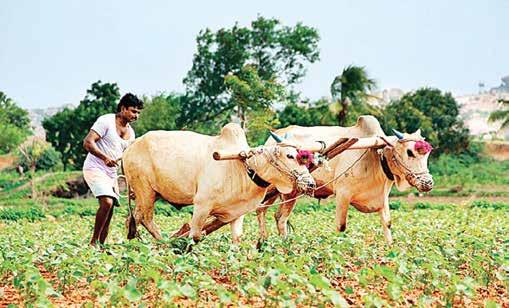

To encourage startups and innovation, tax holiday to startups has been extended by another year to March 31, 2022. It also extended the eligibility period of claiming capital gains exemption for the investment made in the startups by one more year to March 31, 2022.
Education for All
The BJP manifesto had promised to increase the outlay on education to 6% of GDP in the 2014 manifesto. This has the concept of ‘Antyodaya’ meaning by that the poorest of poor gets his share from the national development. The government has launched the National Pension Scheme for Traders and Self-Employed Persons providing a monthly minimum assured pension of Rs 3,000 for the entry age group of 18-40 years. The scheme would benefit more than 3 crore small shopkeepers and traders. Working on the mantra of ensuring the welfare of the poor, the
government provided free ration for 6 months to 80 crore beneficiaries last year. The NREGA allocation was increased by Rs 40,000 crore to help migrant workers who lost their livelihoods.
The Cabinet has approved the Transgender Persons (Protection of Rights) Bill, 2019 which provides a mechanism for social, economic, and educational empowerment of transgenders by defining their identity and rights to prohibit discrimination against them. This will lead to inclusiveness and make them productive members of society.
Foreign Policy
On the foreign affairs front, the BJP has succeeded in India ‘getting its rightful place in the comity of nations and international institutions. In 2020, India entered the elite club of countries by joining the Global Partnership on Artificial Intelligence (GPAI or Gee-Pay) as its founding member. Guided by the philosophy of Vasudev Kutumbakam, the Modi government launched Vaccine Maitri – an ambitious programme to export the two Indian-made shots – Covishield and Covaxin– to the world.
In April 2021, India and three other Quad member nations joined France in kick-starting a three-day naval wargames plan in the eastern Indian Ocean in reflection of their growing maritime cooperation amid China's growing efforts to expand influence in the region.
Miles To Go!
Some of the promises like holding simultaneous elections, reservation for women, Uniform Civil Code, establishment of novel mega airports, Gorkhaland issue, UNSC quest, and police and judicial reforms have been long pending and might require more consensus to be built.
It is worth mentioning that despite the economic slowdown, the Modi government has reiterated its resolve to turn India into a $5-trillion economy. Since Covid-19, the government of India has taken a number of steps to enhance the flow of foreign and domestic investments. From revamping Insolvency and Bankruptcy Code (IBC) to recapitalisation of PSBs with Rs 70,000 crore and undertaken disinvestment, the government is slowly but steadily working towards the $5 trillion economy target.
So far, the tenure of the Modi 2.0 has been quite eventful with the most productive Parliament session, which saw a total of 38 bills being introduced, out of which 28 passed with a majority. It will be interesting to see if the government maintains the same pace of work or not in future. n
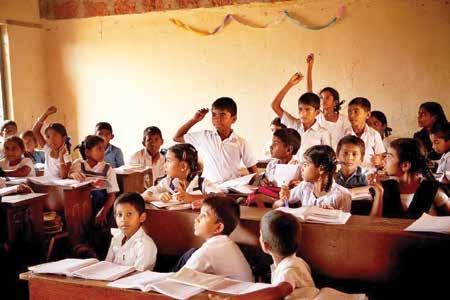
not been achieved and was dropped in the promise of 2019.A new National Education Policy has been launched which aims at making ‘India a global knowledge superpower’.
Of the promises made, a unique initiative, the Pradhan Mantri Innovative Learning ProgrammeDHRUV, has been launched for extraordinarily talented students, from the premises of ISRO. In the Budget 2021-22, funds have been provided for the strengthening of over 15,000 schools for effective implementation of the new NEP, 750 new Eklavya model residential schools, and 100 new Sainik schools.
Inclusive Development
Modi raj is primarily based on










